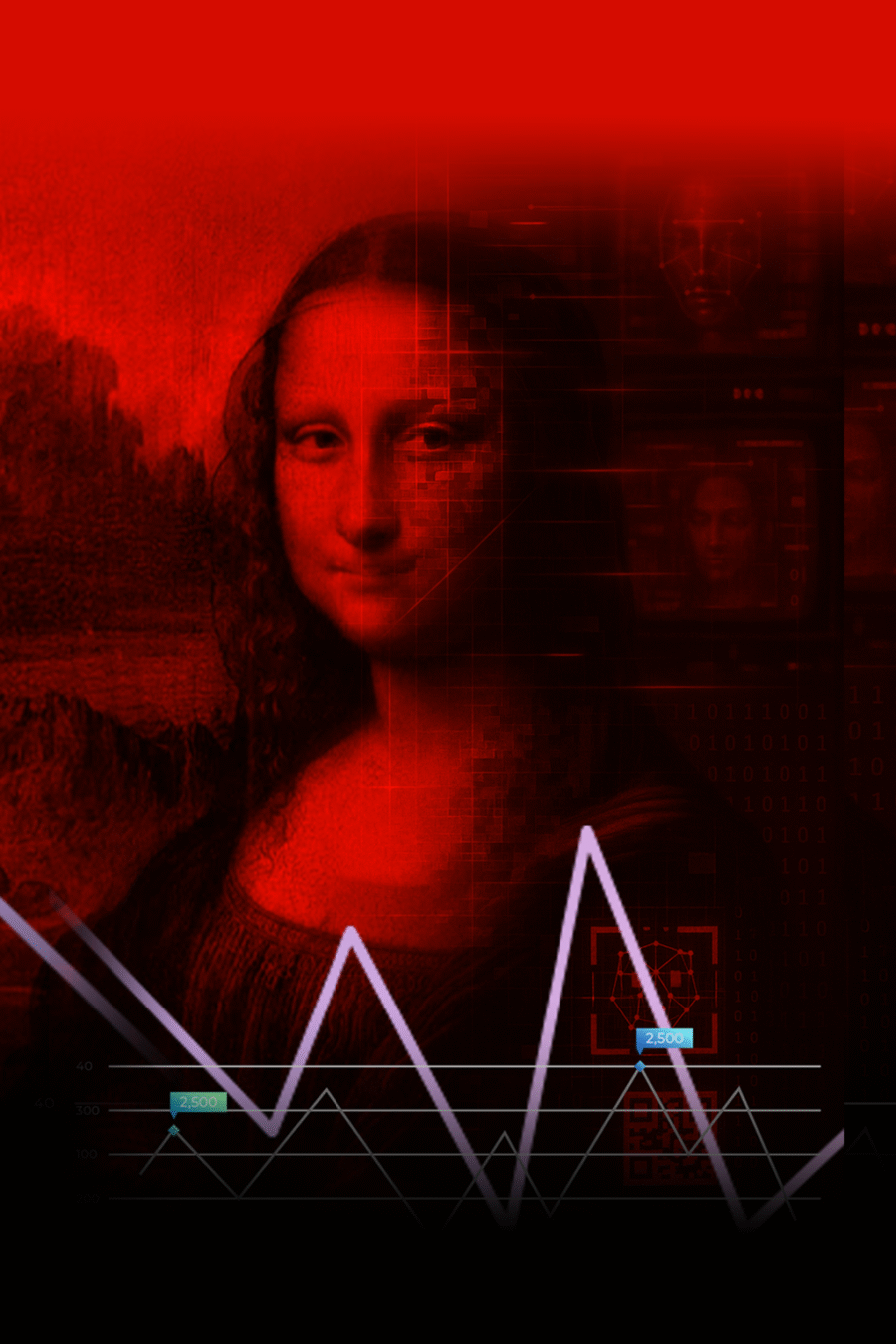The art market is a complex ecosystem valuing artworks on cultural, historical, and projected significance beyond mere supply and demand. It distinguishes between the primary market (new art) and secondary market (resale), the former influencing the latter. Transparency is often limited; prices may not be public, and value is frequently a social construct shaped by experts and market events. This subjectivity maintains exclusivity and high prices, especially in top tiers. Buyers often rely on expert opinion, enhancing this exclusivity. “Value construction” is an active, multi-actor process. Understanding market dynamics, pricing, collector relations, marketing, is vital for artists’ success beyond production, given intense competition. Entrepreneurial thinking is key, as networks and self-marketing significantly influence selection. Art businesses (galleries, auction houses) require precise knowledge of trends and preferences for competitiveness. The market demands continuous adaptation.
Background
Art dealing dates to antiquity. The Middle Ages saw patronage systems in trading hubs. The 17th-century Netherlands marked the modern art market’s birth, making art accessible to a broader middle class; paintings became investments, commercializing art. London auction houses Sotheby’s (1744) and Christie’s (1766) formalized processes. The 19th century saw growth fueled by colonialism. The market is cyclical, with booms and crises, yet resilient. Post-WWII, especially since the 1980s, contemporary art gained dominance. Digitalization, accelerated by the pandemic, is transforming the market. Key actors include auction houses, powerful galleries (Gagosian), museums (MoMA), influential collectors (Guggenheim), and iconic artists (Warhol). Art movements also spurred demand. Power can be concentrated; research suggests elite networks heavily influence artist success, stressing connections beyond pure merit.
Current Situation
Post-pandemic, 2023 global art sales cooled to USD 65 billion (-4% from 2022 but above 2019), with transaction volume up 4%. Spring 2025 reports for 2024 show further consolidation: Art Basel/UBS reported global sales of USD 57.5 billion (-12%). Auction revenues also declined (Artprice: USD 9.9 billion, -33.5%; Artnet: USD 10.2 billion, -27.3%), though Artprice noted record auction lots sold (+5%). This signals a high-price segment correction, while transaction volume in accessible categories increases, aiding smaller galleries. Private Sales increased. In 2023, leading markets: USA (42%), China (19%), UK (17%). For 2024: USA (~43%), UK (~18%), China (~15%). France held ~7%. Germany’s share rose to 3%. The online market hit USD 11.8 billion in 2023 (18% of total sales). For 2024, it was USD 10.5 billion (18% share, -11% value, but well above 2019). Key discussions: transparency, sustainability, ethics, digitalization (NFTs, AI), diversity. Forecasts (5-10 years) suggest normalized online growth, rising sustainability/ethics importance, established new tech, and influence from younger collectors via the “Great Wealth Transfer,” shifting values to digital affinity and social impact. Globalization continues with market diversification. Economic and social factors present opportunities and challenges.
Future Prospects and Trends by Art Genre
Genre-specific developments shape the art market’s future.
- Painting: Remains central. The figuration/abstraction debate persists, with a trend towards figuration addressing contemporary themes (identity, social justice), while some artists explore material-oriented work beyond Western narratives. The “Faceless Figurative Style” gained notice. Globalization, especially growth in China (demand for traditional ink/oil) and India (rising contemporary art), profoundly impacts painting, fostering diverse global scenes balancing international styles with local aesthetics.
- Sculpture & Installation: Sustainability and material awareness are key, favoring recycled/eco-sourced materials (“Biophilic Art”). Large-format public art is growing (US commissions: USD 4.58 billion in 2024), with abstract sculpture, murals, and digital installations prominent. Diversifying funding (corporate/private developers) positions public art at the nexus of culture, urban development, and commerce, risking instrumentalization.
- Photography: Digitalization (online platforms like Artsy, Instagram for marketing) is crucial. Physical prints remain sought after, with print-on-demand flexibility. Online sales are stable post-pandemic boost. Trends include portraiture, color, nature, and retro aesthetics. Digital access intensifies competition, demanding artist specialization.
- Digital Art & NFT: Consolidating post-hype (2021-2022), focus shifts from collectibles to utility NFTs. A mature NFT cycle is expected for 2025, with “Blockchain 2.0” improving provenance, royalties, and digital certificates. The Metaverse offers virtual exhibition spaces. Blockchain’s potential depends on real use cases and regulatory clarity (e.g., EU’s MiCA).
- Performance & Live Art: Hybrid formats (AR, VR, livestreams) expand reach. Monetization involves grants, museum sales, licensing, documentation sales, residencies, and crowdfunding. NFTs are used for collecting choreographies, blurring lines between live experience and collectible object.
- Urban Art: Evolved from underground to an established market force (e.g., Banksy). Museum recognition and high auction prices legitimize it. The market includes public works, canvases, and prints. Corporate collaborations expand reach but challenge authenticity and its subversive roots.
- Ceramics, Glass & Mixed Media: Growing collector interest, driven by appreciation for craftsmanship, sustainability, and unique designs. Global markets for art ceramics (est. USD 1.5 billion for 2025) and art glass (USD 6.8 billion in 2024, projecting USD 11 billion by 2033) expand. Artisanal techniques are returning, especially in luxury design. Mixed media gains popularity, reflecting a desire for authenticity against mass production.
Recommendations for Action, What to Do?
Stakeholders require clear strategies.
- Artists: Develop entrepreneurial skills: build a personal brand, network actively, create sound pricing strategies, and maintain a professional online presence. Find an authentic niche, explore new technologies (NFTs, AI) critically, integrate sustainable practices, and seek collaborations.
- Galleries: Expand online sales and enhance price transparency to attract new buyers, especially younger collectors. Collaborate with other institutions to pool resources and increase reach. Adapt exhibition formats and tap new revenue streams amid economic uncertainty. Maintain diverse artist relationships.
- Curators: Actively promote diversity and inclusion, providing platforms for underrepresented artists. Critically contextualize new technologies and art forms. Emphasize sustainability in exhibition practices.
- Art Entrepreneurs: Develop innovative business models like fractional ownership. Create platforms for underrepresented artists or promote ethical, transparent marketplaces.
Current challenges (economic uncertainty, rising costs) can catalyze innovation. Rethinking traditional models leads to increased online activity, new collaborations (e.g., gallery-sharing), and focus on sustainable growth. Best practices include artists strategically using online platforms (e.g., Beeple) and galleries with strong online presences targeting new collectors (e.g., Almine Rech). Specialization and brand collaborations (KAWS x Dior) are also key. Initial steps: market analysis, network building, a clear digital strategy, realistic financial planning, and attention to legal aspects like copyright.
What to Watch Out For
Navigating the art market demands awareness of success criteria and pitfalls. Key success factors include artistic quality and originality, clear market positioning, a strong brand, active networking, price transparency (especially online), and adaptability to evolving technologies and conditions. Potential pitfalls include market volatility, speculative bubbles (e.g., NFTs), forgeries, unclear provenances, and high operational costs. Over-reliance on “superstar” artists is risky. A significant danger is the “trend trap”: pressure to follow trends can compromise artistic vision for short-term sales, undermining long-term credibility for both artists and galleries. Balancing market adaptation with artistic authenticity is crucial. When selecting partners, technologies, or financing, prioritize reputation, expertise, and shared values. Adopt technologies for genuine added value, considering ethical implications (e.g., AI). Diversify financing.
Avoiding common mistakes and misconceptions fosters sustainable success. Common errors include underestimating marketing/self-promotion, insufficient research on prices/trends, unrealistic pricing, neglecting online presence, poor adaptability, and over-dependence on single entities. Persistent misconceptions: “Good art sells itself” ignores marketing/network reality. “Art and money don’t mix” overlooks art’s economic history. “Online sales are only for cheap art” is refuted by HNWIs buying high-value works online with trust. “Successful artists are particularly talented” oversimplifies; strategy and networks are vital. For long-term sustainability and credibility: maintain authenticity and artistic integrity. Practice transparency. Nurture long-term relationships. Commit to continuous learning and adaptation. Adhere to ethical principles (provenance, sustainability, fair practices) to strengthen reputation and the market ecosystem.
Outlook
The art market is a multifaceted field, shaped by cultural values, economic realities, technological innovations, and societal currents. Its history shows resilience despite cyclical fluctuations. Current 2023-2024 data indicate consolidation, especially in high-price segments, alongside increasing transaction volume in accessible categories, signaling potential democratization driven by younger generations and digitalization. Future prospects vary by genre, from painting’s global/local narrative balance to digital art’s search for sustainable value post-hype. A proactive, informed approach is crucial for all players. Entrepreneurial skills, digital agility, cooperation, authenticity, transparency, and ethical standards are paramount for long-term success in this evolving reflection of societal discourse and engine of cultural development.









